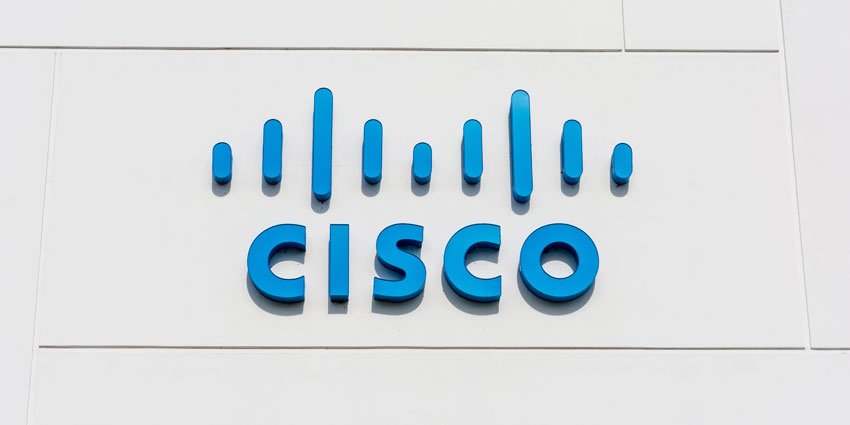From simple agent desktop to GenAI-fueled automations, contact centers have more opportunities than ever to mechanize tasks.
Many of these of these are agent-focused, automating processes such as after call work, knowledge retrieval, and form-filling.
Yet, automation is also touching the jobs of other contact center stakeholders.
For example, automated call listening is simplifying the supervisor role. Moreover, improving conversational AI is enhancing customer self-service experiences.
However, such examples only scratch the surface. In this roundtable, our panelists get underneath the skin of contact center automation, unveiling several trends, tricks, and tools.
This month, the industry experts taking part include:
- Lauren Maschio, Team Lead of Product Marketing at NICE
- Simon Thorpe, Director of Solution Consulting EMEA at Pegasystems
- Daniel Ziv, VP of Experience Management & Analytics, GTM Strategy at Verint
- Charanya (CK) Kannan, Chief Product & Engineering Officer at Talkdesk
- John Finch, SVP of Solutions & Product Marketing at Dialpad
Read on to capture their specialist perspectives and extract learnings for a future contact center automation project.
Which Processes Are More Contact Centers Starting to Automate? (The Trends)
Post-Call Processing
Maschio: Contact centers have started to automate after-call notes. Traditionally, agents type these up manually. Yet, purpose-built AI and generative AI technology can now deliver objective, accurate, and consistent post-call summaries with the proper context.
As a result, contact centers save valuable time, allowing agents to focus on higher-priority tasks and become more productive.
Moreover, it ensures the next agent will adequately understand a customer’s interaction history, making future interactions seamless.
Desktop Processes
Thorpe:
Contact centers are striving to reduce manual tasks such as alt-tabbing between systems, launching applications, filling in forms, searching for information, and note-taking.
Why? Because these activities often divert attention away from fostering an empathetic and engaged conversation with the customer.
Also, such manual processes not only prolong interactions and increase handling costs, but can result in a suboptimal customer experience, prolonged customer conversations, and human errors.
Entire Customer Conversations
Tools like chatbots or virtual assistants efficiently triage and route customers to the best-placed agents and employees outside the traditional contact center.
With these solutions, many businesses are also deflecting customers from phone channels and directing them toward self-service portals, AI-enabled chatbots, or agent-assisted messaging.
Equally transformative is the automation of email, favored by many customers for its simplicity.
Advanced tools using natural language processing (NLP) and AI decision-making capabilities can directly respond or appropriately triage customer emails, driving faster resolutions while enhancing agent efficiency.
Cross-Function Workflows
Workflow automation connects and automates work across people and systems to resolve customer queries faster.
That is significant in aiding the efficient service delivery across every interaction to minimize the team’s cost-to-serve while managing increased contact volumes.
Pegasystems takes workflow automation beyond contact center confines too, as evident in its “autonomous enterprise” strategy.
Agent Guidance
Ziv: Advances in AI present many new automation opportunities. Yet, companies mustn’t boil the ocean with automation because customers still want human engagement, especially if it’s an urgent or emotionally charged issue.
The first step is to automate the simple things, using chat and messaging to get in front of customers with self-service while freeing agents to handle more complex and emotionally charged interactions. Many contact centers are already at this point.
The next step is automating elements of human-to-human interactions with real-time guidance, real-time coaching, and AI-powered bots for tackling manual tasks independently.
For example, Verint’s Interaction Wrap-Up Bots provide automatic interaction summarization, and Interaction Transfer Bots offer seamless transitions from self-service to assisted service.
Such tools provide agents with the necessary context to assist customers immediately, allowing them to start resolving issues rather than repeating all the same questions asked previously.
Customer Insight Generation
Kannan: With the widespread availability of no-code, accurate, and responsible generative AI (GenAI) tools, automation improves processes and outcomes across the customer journey.
Contact centers are automating processes like after-call summaries with GenAI, which can automatically recap the conversations between customers and agents, reducing after-call work to about two seconds.
Moreover, GenAI automatically analyzes conversation data in the contact center and detects trending topics with no setup required.
Surfacing insights on critical issues happening in the contact center shifts administrators from a reactive state to a proactive state.
As such, they may uncover where to introduce automations that reduce cost per contact, coaching that speeds agent time to value, or operational changes that positively impact customer satisfaction.
CX Reporting
Finch: Many businesses have automated and optimized multiple customer journey touchpoints through advances in AI.
For example, agents may receive real-time coaching, suggested answers, and live sentiment analysis during live interactions, supporting them ‘in the moment’ when they need it most.
Following the call, AI can automatically deliver real-time transcriptions, identify the call purpose, provide a succinct summary, list the actions, and infer a customer satisfaction score (CSAT).
Particularly on CSAT, the impact of AI is enormous. For instance, organizations using Dialpad’s CSAT can move away from traditional survey response rates of five percent and instead have 100 percent of calls monitored for customer satisfaction.
What Best Practices Would You Recommend to Contact Centers Looking to Automate More of Their Work? (The Tricks)
Prioritize Projects Via Sentiment
Ziv: Identify what types of interactions cause the most impact on sentiment, escalation, or potential for a compliance breach.
After establishing interactions and processes, decide where automation can be embedded to help support these interactions and create a better or positive customer experience.
The rest follows the 80-20 rule: identify the 80 percent of interactions possible to self-serve.
Companies can use solutions such as speech and text analytics to identify the most common interactions that can be self-served. Then, find the other 20 percent that impacts agent complexity/interaction duration to determine where agents most need support.
Take a Unified Platform Approach
Companies face increasing challenges with point solutions that don’t talk to each other, resulting in critical engagement data dispersed across different systems and departments.
It’s okay to have point solutions, but they should be part of an interconnected strategy and preferably a unified platform. This is where an open platform approach becomes so valuable.
That open approach sits at the heart of Verint’s new CCaaS platform.
Walk the Walk
Thorpe: It’s crucial to first walk in the shoes of both agents and customers. Observing interactions closely can reveal key pain points, such as excessive alt-tabbing, manual note-taking, and makeshift shortcuts, all indicating areas ripe for automation.
Also, assess the efficacy of self-service platforms. A frequent fallback to voice interactions often signifies gaps in online or mobile app resources.
As the business ventures into automation, organizations should involve agents in the process, pinpoint potential automation areas, and pilot them with a group of reps for real-world testing.
After all, while automation offers the promise of efficiency, ensuring it doesn’t inadvertently introduce new challenges is essential.
As recent Gartner research underlines, agents will only embrace automation tools if they tangibly enhance their work experience rather than complicate it.
Ask Vendors the Right Questions
Finch: Organizations wanting to transform their contact centers must understand the market and what is available that meets their needs.
As such, buyers must learn to ask the right questions of vendors. Examples include:
- Where is your data coming from?
- How can you check for bias?
- How are your models built?
These help paint a picture of the impact the AI might have.
In the case of GenAI, it’s also important to understand that a smaller AI large language model (LLM) with a specific use case – such as optimizing customer conversations – will likely prove more accurate than a massive, general LLM.
Why? Because massive LLM providers, such as ChatGPT, have ingested the entire internet to answer any question, causing challenges for business applications. It is expensive, can be slow, and answers can be inaccurate.
Stick to Purpose-Built AI
Maschio: For automation to work, contact centers can’t use generic AI; it must be purpose-built.
Such AI is brand-aligned, based on CX data, operationalized in all CX capabilities, secure, and compliant. This ensures that tasks that are automated generate accurate and consistent results.
Without these guardrails, mistakes can happen – including inaccurate or inappropriate responses – as the widely publicized GenAI hallucinations exemplify.
Create Internal Guardrails
Kannan: With AI only as smart as the data businesses feed it, every contact leader must set internal guardrails to ensure the data powering these AI models is accurate, unbiased, and high-quality.
In the case of GenAI models, prompt-based conditional rules are effective at controlling the output, and by simulating the results based on past interactions, businesses can thoroughly test GenAI to eliminate risks such as hallucinations and biases.
AI can significantly improve customer support, but that’s only if leaders establish reliable and accurate solutions.
Why Should Businesses Consider Your Brand as Their Contact Center Automation Partner? (The Tools)
NICE
Maschio: NICE has purpose-built its Enlighten AI technology to generate accurate and brand-aligned outputs and operationalized AI across its entire CCaaS platform offering, CXone.

The Forrester Wave leader also has two critical differentiators: domain expertise and a historical dataset of billions of interactions.
With decades of experience in the CX space and its historical dataset, it’s driving the success of AI and automation, fueling smarter, more accurate outputs.
These components are why organizations should consider NICE as a contact center automation partner.
Verint
Ziv: Verint’s Open CCaaS Platform ingests customer engagement data from all sources and provides flexible deployment options.
Having the “right” engagement data is the key to making a contact center successful. An engagement data hub at the platform’s core unifies siloed engagement data from all parts of the contact center, including the data generated through interactions from every channel, workforce performance of contact center employees, and customer experiences.
What Verint refers to as “engagement data” differs from CRM, ERP, or telephony data. Although these are also essential components, this data doesn’t directly impact agent performance on the customer experience.

Instead, engagement data – customer feedback data – is unique because it’s comprised of the operational, behavioral, and voice of the customer data.
Verint’s Open CCaaS Platform unifies all engagement data to help companies provide an optimal customer experience and drive efficiencies.
Verint Da Vinci AI at the platform’s core also allows for rapid innovation and is open to leveraging Verint’s unique proprietary AI capabilities and the best commercial AI models on the market.
Pegasystems
Thorpe: Pega’s business started by automating challenging processes, causing the most pain and aggravation. This foundational expertise means it’s not just acquainted with challenges but purpose-built to tackle them.

That deep well of experience covers customer service and case management automation across every field, from telcos to insurance, taxation to bank lending.
Such centralized decision-making capabilities ensure customer service teams are consistently empowered with the optimal next-best action tailored for each customer interaction.
Talkdesk
Kannan: Talkdesk recently announced significant product updates that deepen the integration of generative AI (GenAI) within its flagship Talkdesk CX Cloud Platform and Industry Experience Clouds.

Companies of all shapes and sizes can quickly deploy, monitor, and fine-tune GenAI in the contact center without coding experience. That eliminates inaccurate and irresponsible AI uses alongside subsequent brand risk.
Such innovation ensures that Talkdesk delivers a modern customer service experience that drives positive outcomes for customers and improves the bottom line.
Dialpad
Finch: Dialpad’s Ai-Powered Customer Intelligence Platform has a unified collaboration layer that provides organizations with coaching and insights across omnichannel business conversations.

What sets Dialpad apart is its long-term investment in AI. As a result, it has amassed over five billion minutes of proprietary conversational and collaboration data to build its GenAI infrastructure.
Such an infrastructure powers its features and products. While other vendors in the market have to outsource their LLM, Dialpad is the industry’s only vertically integrated, cloud-native solution with a native LLM.
Moreover, the vendor prioritizes utilizing its original language processing and machine learning capabilities to help scale in accuracy, fluency, availability, and cost.
Miss out on our previous CX Today roundtable? Check it out here: Unifying CCaaS & UCaaS







